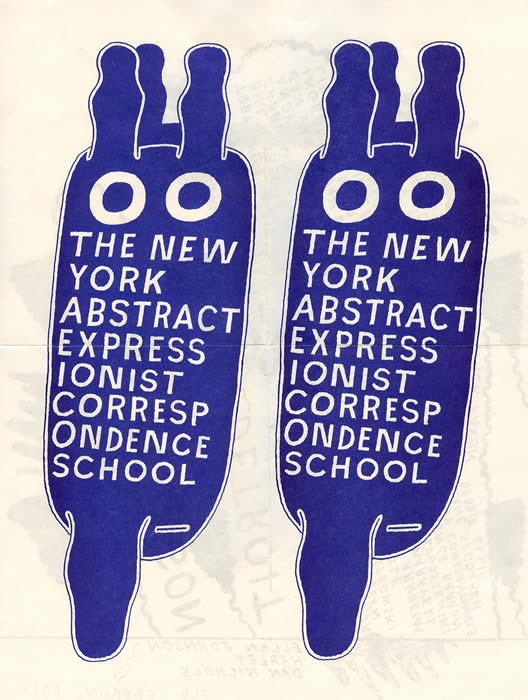Ray Johnson
“Johnson was in many ways the quintessential artist’s artist — respected and admired by peers for his protean imagination and creative energy, but never attaining recognition beyond the confines of the art world.”
—Sherri Geldin, Director of Correspondence

Ray Johnson was born on October 16, 1927 in Detroit Michigan. His interests in art stem from an early age. After art classes in high school, he enrolled in the experimental Black Mountain College outside of Asheville, North Carolina. The school was founded in 1933 as a school for the arts with important faculty in poetry, visual arts and design. During his time here in the 1940s, Johnson was taught by people such as Joseph Albers, John Cage, Merce Cunningham, Buckminster Fuller, and worked with Robert Rauscheberg and Willem de Kooning.
Johnson moved to New York in 1948, where he met Andy Warhol, Jasper Johns, Cy Twombly and others. Some consider Johnson responsible for influencing many of the important artists of the Pop Art movement. Like Warhol, Johnson too was obsessed with celebrity, and his 1950’s collages of Elvis Presley and James Dean remain some of his most reproduced works today.
During his time in New York, Johnson began to destroy his paintings and add to previous work that he had created at Black Mountain. He chose collage as his primary medium, finding it modern and able to convey more complex messages than painting. Between 1963 and 1973, Ray Johnson developed mail art and the New York Correspondence (or Correspondance) School. Johnson talked about the school in a 1969 interview: "the idea of the movement? Well, I used to think that what I wanted the 'correspondance' school to be was a fantastic, gigantic Calder mobile."
A play on the New York School and artistic institutions in general, it is ironic that the NYCS was first officially recognized in the Whitney Museum exhibit Ray Johnson: New York Correspondence School in 1970. The New York Magazine called the show, "weirdly tantalizing," and predicted that it "may prove to be the talk of the town." The success went against most of Johnson’s ideas of art, and he followed with the project "Dear Whitney Museum, I hate you. Love, Ray Johnson"
| Home | Life | Correspondence | Add to and Returns | Legacy |